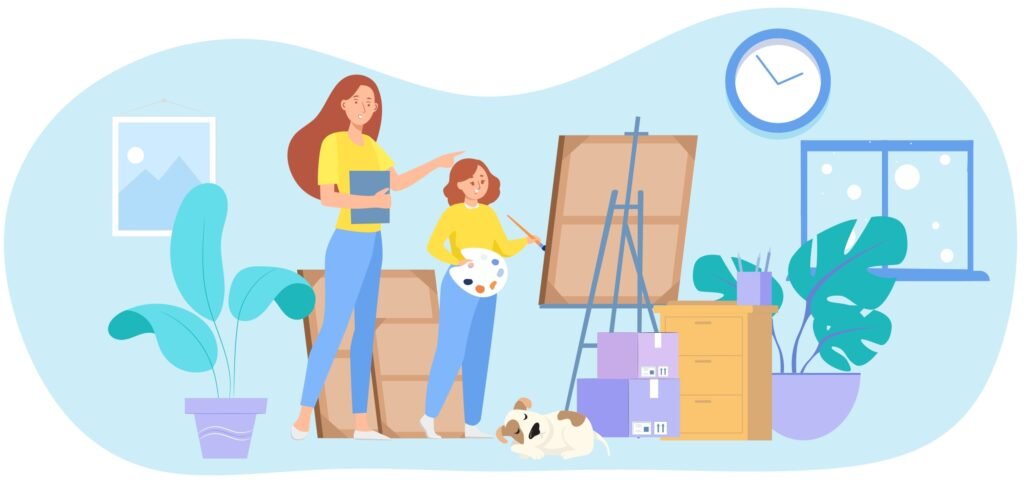Technology and the high-speed Internet have opened up myriad ways of imbibing knowledge and learning a new skill. However, the traditional methods of classroom learning remain the most popular due to their personal and physically interactive nature. Where our hands are tied, we are forced to turn to online teaching methods such as skype or zoom or video courses, but these remain a last resort with most students, the most serious of whom still prefer hands-on teaching and learning. There has never been anything in the history of teaching that is better than the guiding hand of a faculty that exists practically and in real-time.
Over the last couple of years, one-to-one education is gaining immense popularity. Unlike conventional group classes, in one-to-one classes, courses are specifically tailor-made for an individual participant and are delivered on a one-to-one basis i.e. one faculty per student and per topic. This option becomes more meaningful and critical when the training is related to typical subjects such as visual fine arts (i.e. drawing, sketching, painting, sculpturing, etc.), where participant’s existing abilities are not homogeneous; and the best way to impart knowledge and new skills to the participant is by shown-n-tell in person.
Let us try to understand various pros and cons of One-To-One Visual Art Teaching.
Advantages of One-To-One Visual Art Teaching are –
- One-to-one engagement model: A one-to-one session between faculty and student ensures that the full concentration of either is devoted to each other without the distraction of other students at different levels of abilities. The faculty and student are pressurized to achieve results because of a greater degree of responsibility. This entire close coupling ultimately leads to a higher rate of success and minimum risks.
- Personalized course: One-on-one courses are tailor-made using flexible modules so that course objectives are attained easily and quickly. As a result, the content can be derived 70% to 80% faster than in a group with hands-on correction and exemplary guidance, with an over 99% of success rate. This system reduces the chances of risks that naturally occur within heterogeneous groups such as mixed ability, group dynamics, early finishers, slow learners and late arrivals, etc.
- Delivery methodology: It enables a personalized and flexible delivery methodology to suit the depth of the topic and the student’s existing abilities. To minimize the learning curve, courses are designed with the right combination of structured, semi-structured, and un-structured training, with the required depth of knowledge for each topic. It reduces the efforts required to achieving efficacy and a better learning curve, with greater understanding and content retention.
- Flexible class timings: It works on the basis of mutually agreed, flexible timings for both the student and the faculty. Learning at self-pace is considered to be the most effective and efficient way of learning topics related to visual arts.
- Focus on creative abilities: For the faculty, it is easy to harness the creative abilities of the participant, which is different from replication (i.e. copy from reference picture) skills ensuring that by being present to guide him, the faculty encourages originality and out-of-the-box thinking. Such one-to-one interactions may also help students explore their hidden skills too.
Disadvantages are far less but may be mentioned as a by-product
- Lack of competition: The lack of competition and no group learning via collaboration may churn out limited perspectives and a laid-back attitude in a student.
- High-level commitment: Sessions can be intense, physically and mentally exhausting, for both faculty and student. Because of the dynamic nature of the content and its apt delivery, high expertise (i.e. combination of right domain knowledge and high level of teaching skills) is expected from faculty, and an equally dedicated and persistent application is expected from a student too.
- May sound like an expensive option: As compared to group classes, one-to-one classes may appear to be an expensive option for casual students. But for serious students, one-to-one engagement will turn out to be a less expensive option, as the goals are met quickly, with the required depth of knowledge.
Conclusion
The primary objective of the course is to quickly learn the identified subject with the right depth of knowledge. In order to realize this objective, consider an art academy, which has competent faculty, and are offering one-to-one visual fine art education services, without compromising on the quality of knowledge, which is getting imparted to the students. If you are a serious student and looking for value-for-money, effective teaching, and quick results, consider one-to-one teaching.


